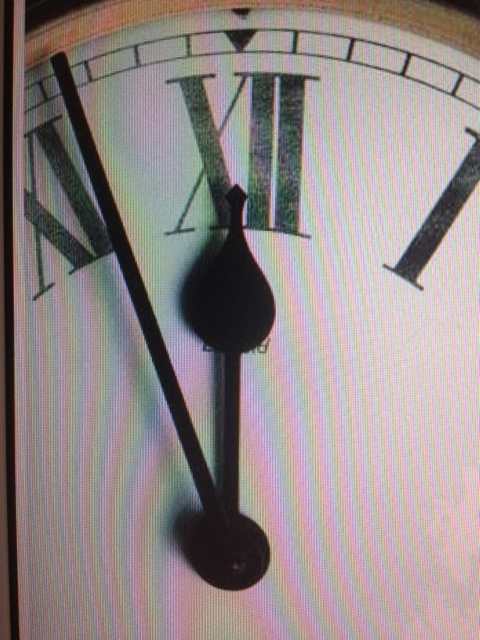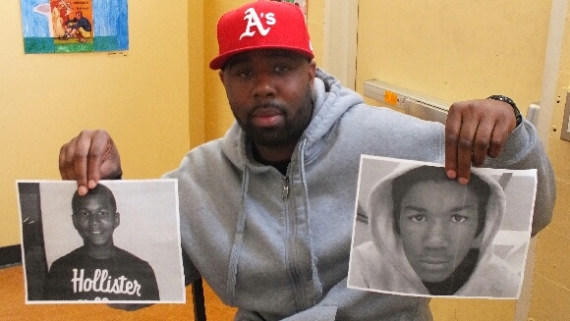opinion piece
by Nicole Funes
Daily agony: my alarm rings, as I stumble out of bed at 5 a.m. way before the blue jays start to squawk. Shower, dress, quick juice and race five blocks to the bus stop. That run downhill gets my heat beating.
It’s now 6:45 and if I’m lucky I’m on the first of two buses that cross Oakland from East (south) to West (others have to transfer twice). It’s an hour and 20 minute ride and I have to be lucky — the buses have to be on schedule and follow their route without “incident” for me to make it to school on time.
There are a handful of us loyal to the West: we were displaced by gentrification but we identify with West Oakland and its community spirit and “family-like” feel.
Nevertheless, school administrators greet us with curt remarks “Late again?” and stony stares, as though we stopped at the corner store for a chat or overslept.
Anywhere between 12 to 40 students arrive late to school every day, said Will Blackwell, who teaches manhood at McClymonds. Tardiness can affect grades, other teachers said.
It’s clear that we need more sleep and less stress about the commute.
Just look at the newest study: a study by the University of Minnesota’s Center for Applied Research and Educational Improvement showed that later start times for high school students are better. The three-year study involved 9,000 students at eight high schools in three states.
Earlier studies in Minneapolis showed that later start times (and more sleep)produced higher graduation rates.
Even McClymonds students recognize that sleep deprivation affects their school work.
“I’m tired and irritated in the morning,” said Kaya LaForte, a freshman at McClymonds, who is an A student but feels she could do more if she were not so tired.
Part of her problem is the long commute. “It can take an hour or more. The bus driver could be making a lot of stops. Some people might have to take 2 more buses, and BART, then have to walk sometime and then might not make it,” she said.
Like others, she often skips breakfast.
She feels targeted when she comes in late. The response to the bus saga at school: “That’s not an acceptable excuse. You need to leave 5 minutes earlier.”
Sleep affects performance, the study showed. More sleep, researchers found, improves grades and standardized test results.
“We did find that there was statistically significant improvement in their grades in English, math, social studies and science, all the core academic areas,” said Kayla Wahlstrom, director of the University of Minnesota Center and the study’s author. “And we found improvements on standardized tests, like the ACT test.”
The study showed that schools with start times at 7:30 a.m. had just 34 percent of students who reported getting eight or more hours of sleep, while schools with start times of 8:55 a.m. had 66 percent of students getting eight or more hours of sleep.
Wahlstrom also said coaches told her that the athletes were more able to remember plays and could perform better physically with more sleep.
“It’s easier to get up in the morning when you get enough sleep,” said Anthony Beron, a sophomore who played JV football and is a long distance runner. “When you’re rested, you can run faster, longer and compete harder.”









Pass the Peace: Why I Embrace Non-Violence
Shamarray Ross, incoming freshman at McClymonds, gathers peace pledges in preparation of Saturday’s event
by Jonae Scott
I have experienced violence and force first-hand in West Oakland, a community in which my roots run deep. I’ve been shot (two years ago during a peaceful vigil for an older friend who was gunned down) and in April, my parents were arrested, and then released, during the raid of the Acorn housing project.
It was traumatic to have federal agents burst into my apartment with guns, assault rifles and flash bang grenades, handcuff my parents and brother, and throw my family’s possessions around.
Because of these experiences, I need to be involved, even to lead any activity to bring peace to West Oakland. The “Pass the Peace” event this Saturday will mark the first time I take action myself. It was time.
It’s important for youth to let their voices be heard. Take Shamarray Ross, a freshman at McClymonds. She says, “It’s time for youth to make it better. Nobody else is.”
And she’s right.
We are making peace pledges at the event at McClymonds this Saturday from 12:30pm to 4:30pm. Sponsored by the Alliance Recycling, the event is called “the Spirit of West Oakland” because we want everyone in the community to join us.
Like my peers, I was distressed to read The San Francisco Chronicle story, that noted that since 2002, the number of African-American men killed on the streets of Oakland nearly matched the number who graduated from public high schools ready to attend a state university.
So distressed that I’m taking action. I demand an end to gun violence in my community.
1 Comment
Posted in 100 block initiative, Academic success, after school, Alumni, anxiety, changes, Children, Commentary, community, community activism, Culture Keepers, Education, Gangs, Guns, leadership, protest, Racism, resilience, restorative justice, School News, school spirit, shooting, stress, success, Trends, violence, YOLO, Youth
Tagged Alternatives in Action, Chaz Walker, Keith Carson, Lynette Gibson McElhaney, Mack. Pass the Peace, McClymonds, non-violence, Samba Funk, The Spirit of West Oakland, violence, West Oakland Alliance Foundation